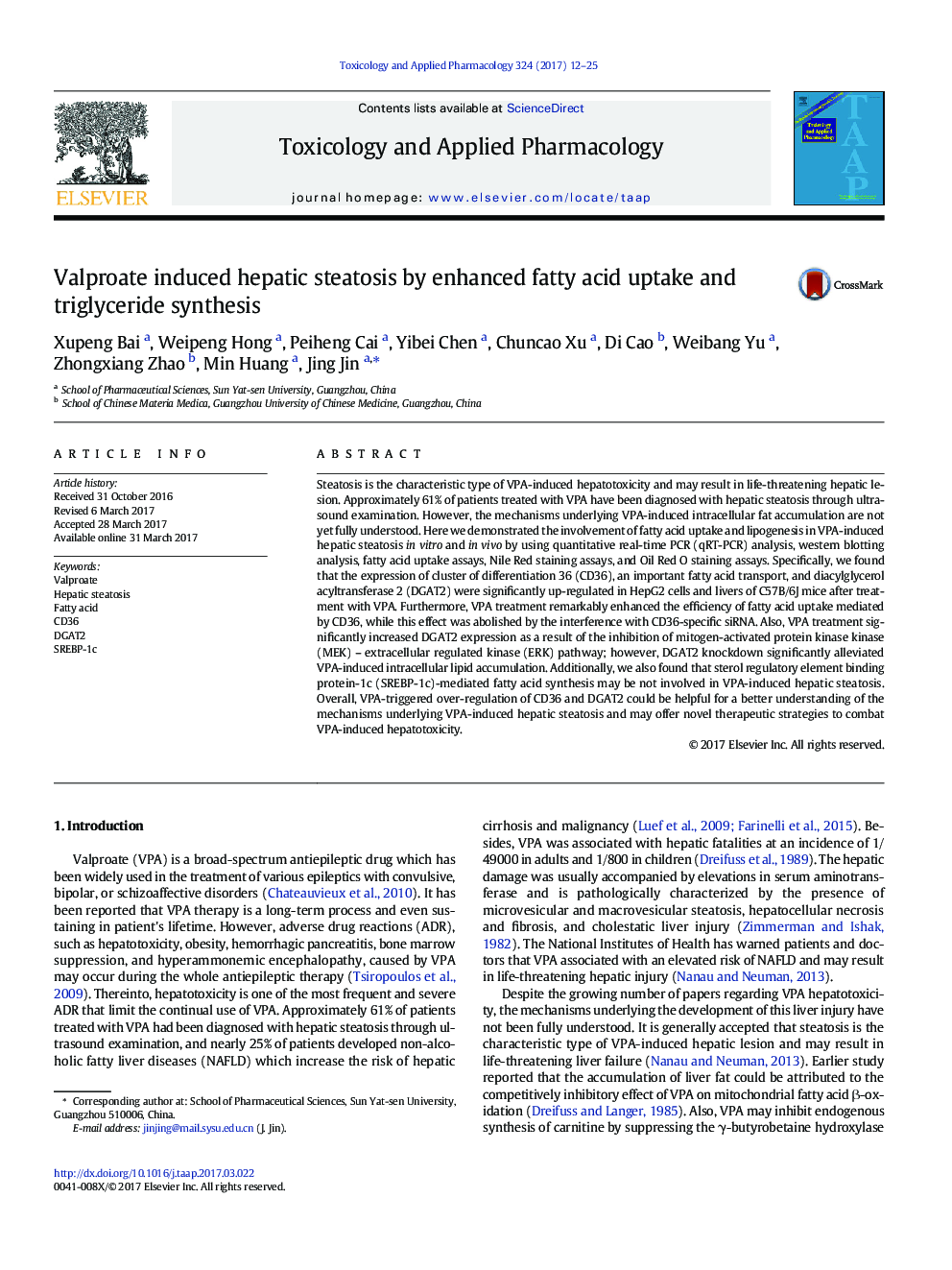| Article ID | Journal | Published Year | Pages | File Type |
|---|---|---|---|---|
| 5558306 | Toxicology and Applied Pharmacology | 2017 | 14 Pages |
â¢â¢ VPA induced hepatic steatosis and modulated genes associated with lipid metabolism.â¢â¢ CD36-mediated fatty acid uptake contributed to VPA-induced lipid accumulation.â¢â¢ VPA increased the hepatic level of DGAT2 through inhibiting MEK-ERK pathway and enhanced triglyceride synthesis.â¢â¢ SREBP-1c-mediated fatty acid synthesis was not involved in VPA-induced hepatic steatosis.
Steatosis is the characteristic type of VPA-induced hepatotoxicity and may result in life-threatening hepatic lesion. Approximately 61% of patients treated with VPA have been diagnosed with hepatic steatosis through ultrasound examination. However, the mechanisms underlying VPA-induced intracellular fat accumulation are not yet fully understood. Here we demonstrated the involvement of fatty acid uptake and lipogenesis in VPA-induced hepatic steatosis in vitro and in vivo by using quantitative real-time PCR (qRT-PCR) analysis, western blotting analysis, fatty acid uptake assays, Nile Red staining assays, and Oil Red O staining assays. Specifically, we found that the expression of cluster of differentiation 36 (CD36), an important fatty acid transport, and diacylglycerol acyltransferase 2 (DGAT2) were significantly up-regulated in HepG2 cells and livers of C57B/6J mice after treatment with VPA. Furthermore, VPA treatment remarkably enhanced the efficiency of fatty acid uptake mediated by CD36, while this effect was abolished by the interference with CD36-specific siRNA. Also, VPA treatment significantly increased DGAT2 expression as a result of the inhibition of mitogen-activated protein kinase kinase (MEK) - extracellular regulated kinase (ERK) pathway; however, DGAT2 knockdown significantly alleviated VPA-induced intracellular lipid accumulation. Additionally, we also found that sterol regulatory element binding protein-1c (SREBP-1c)-mediated fatty acid synthesis may be not involved in VPA-induced hepatic steatosis. Overall, VPA-triggered over-regulation of CD36 and DGAT2 could be helpful for a better understanding of the mechanisms underlying VPA-induced hepatic steatosis and may offer novel therapeutic strategies to combat VPA-induced hepatotoxicity.
Graphical abstractDownload high-res image (190KB)Download full-size image
